The Albert N'Yanza, Great Basin of the Nile by Samuel White Baker (love story novels in english .txt) 📕
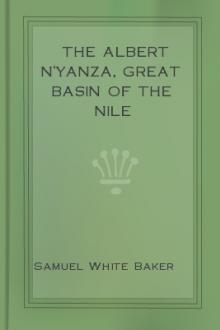
- Author: Samuel White Baker
- Performer: -
Book online «The Albert N'Yanza, Great Basin of the Nile by Samuel White Baker (love story novels in english .txt) 📕». Author Samuel White Baker
other animals are starving, the camel manages to pick up a subsistence,
eating the ends of barren, leafless twigs, the dried sticks of certain
shrubs, and the tough dry paper-like substance of the dome palm, about
as succulent a breakfast as would be a green umbrella and a Times
newspaper. With intense greediness the camel, although a hermit in
simplicity of fare in hard times, feeds voraciously when in abundant
pasture, always seeking the greenest shrubs. The poison-bush becomes a
fatal bait.
The camel is by no means well understood in Europe. Far from being the
docile and patient animal generally described, it is quite the reverse,
and the males are frequently dangerous. They are exceedingly perverse;
and are, as before described, excessively stupid. For the great deserts
they are wonderfully adapted, and without them it would be impossible to
cross certain tracts of country for want of water.
Exaggerated accounts have been written respecting the length of time
that a camel can travel without drinking. The period that the animal can
subsist without suffering from thirst depends entirely upon the season
and the quality of food. Precisely as in Europe sheep require but little
water when fed upon turnips, so does the camel exist almost without
drinking during the rainy season when pastured upon succulent and dewy
herbage. During the hottest season, when green herbage ceases to exist
in the countries inhabited by camels, they are led to water every
alternate day, thus they are supposed to drink once in forty-eight
hours; but when upon the march across deserts, where no water exists,
they are expected to carry a load of from five to six hundred pounds,
and to march twenty-five miles per day, for three days, without
drinking, but to be watered on the fourth day. Thus a camel should drink
the evening before the start, and he will carry his load one hundred
miles without the necessity of drinking; not, however, without suffering
from thirst. On the third day’s march, during the hot simoom, the camel
should drink if possible; but he can endure the fourth day.
This peculiarity of constitution enables the camel to overcome obstacles
of nature that would otherwise be insurmountable. Not only can he travel
over the scorching sand of the withering deserts, but he never seeks the
shade. When released from his burden he kneels by his load in the
burning sand, and luxuriates in the glare of a sun that drives all other
beasts to shelter. The peculiar spongy formation of the foot renders the
camel exceedingly sure, although it is usual to believe that it is only
adapted for flat, sandy plains. I have travelled over mountains so
precipitous that no domestic animal but the camel could have
accomplished the task with a load. This capability is not shared
generally by the race, but by a breed belonging to the Hadendowa Arabs,
between the Red Sea and Taka. There is quite as great a variety in the
breeds of camels as of horses. Those most esteemed in the Soudan are the
Bishareen; they are not so large as others, but are exceedingly strong
and enduring.
The average value of a baggage camel among the Soudan Arabs is fifteen
dollars, but a good “hygeen,” or riding dromedary, is worth from fifty
to a hundred and fifty dollars, according to his capabilities. A
thoroughly good hygeen is supposed to travel fifty miles a day, and to
continue this pace for five days, carrying only his rider and a small
waterskin or girba. His action should be so easy that his long ambling
trot should produce that peculiar movement adopted by a nurse when
hushing a child to sleep upon her knee. This movement is delightful, and
the quick elastic step of a first-class animal imparts an invigorating
spirit to the rider; and were it not for the intensity of the sun, he
would willingly ride for ever. The difference of action and of comfort
to the rider between a common camel and a high class hygeen is equal to
that between a thoroughbred and a heavy dray-horse.
However, with all the good qualities of a “Bishareen,” my best camel was
dead. This was a sad loss. So long as my animals were well I felt
independent, and the death of this camel was equal to minus five cwt. of
luggage. My men were so idle that they paid no attention to the animals,
and the watcher who had been appointed to look after the four camels had
amused himself by going to the Latooka dance. Thus was the loss of my
best animal occasioned.
So well had all my saddles and pads been arranged at Khartoum, that
although we had marched seven days with exceedingly heavy loads, not one
of the animals had a sore back. The donkeys were exceedingly fresh, but
they had acquired a most disgusting habit. The Latookas are remarkably
clean in their towns, and nothing unclean is permitted within the
stockade or fence. Thus the outside, especially the neighbourhood of the
various entrances, was excessively filthy, and my donkeys actually
fattened as scavengers, like pigs. I remembered that my unfortunate
German Johann Schmidt had formerly told me that he was at one time
shooting in the Base country, where the grass had been burnt, and not a
blade of vegetation was procurable. He had abundance of sport, and he
fed his donkey upon the flesh of antelopes, which he ate with avidity,
and throve exceedingly. It is a curious fact that donkeys should under
certain circumstances become omnivorous, while horses remain clean
feeders.
CHAPTER VII.
LATOOKA.
The country in the immediate neighbourhood of Latooka was parched, as
there had been no rain for some time. The latitude was 4 degrees 35’,
longitude 32 degrees 55’ E.; the rains had commenced in February on the
mountains on the south side of the valley, about eighteen miles distant.
Every day there was an appearance of a storm; the dark clouds gathered
ominously around the peak of the Gebel Lafeet above the town, but they
were invariably attracted by the higher range on the opposite and south
side of the valley, where they daily expended themselves at about 3 P.M.
On that side of the valley the mountains rose to about 6,000 feet, and
formed a beautiful object seen from my camp. It was most interesting to
observe the embryo storms travel from Tarrangolle in a circle, and
ultimately crown the higher range before us, while the thunder roared
and echoed from rock to rock across the plain.
The Latookas assured me that at the foot of those mountains there were
elephants and giraffes in abundance; accordingly, I determined to make a
reconnaissance of the country.
On the following morning I started on horseback, with two of my people
mounted, and a native guide, and rode through the beautiful valley of
Latooka to the foot of the range. The first five or six miles were
entirely de-pastured by the enormous herds of the Latookas who were
driven to that distance from the towns daily, all the country in the
immediate vicinity being dried up. The valley was extremely fertile, but
totally unoccupied and in a state of nature, being a wilderness of open
plains, jungles, patches of forest and gullies, that although dry
evidently formed swamps during the wet season. When about eight miles
from the town we came upon tracks of the smaller antelopes, which,
although the weakest, are the most daring in approaching the habitations
of man. A few miles farther on, we saw buffaloes and hartebeest, and
shortly came upon tracks of giraffes. Just at this moment the inky
clouds that as usual had gathered over Tarrangolle came circling around
us, and presently formed so dense a canopy that the darkness was like a
partial eclipse. The thunder warned us with tremendous explosions just
above us, while the lightning flashed almost at our feet with blinding
vividness. A cold wind suddenly rushed through the hitherto calm air;
this is the certain precursor of rain in hot climates, the heavier cold
air of the rain-cloud falling into the stratum of warmer and lighter
atmosphere below.
It DID rain—in such torrents as only the inhabitants of tropical
countries can understand. “Cover up the gunlocks!”—and the pieces of
mackintosh for that purpose were immediately secured in their places.
Well, let it rain!—it is rather pleasant to be wet through in a country
where the thermometer is seldom below 92 degrees Fahr., especially when
there is no doubt of getting wet through—not like the wretched
drizzling rain of England, that chills you with the fear that perhaps
your great-coat is not waterproof, but a regular douche bath that would
beat in the crown of a cheap hat. How delightful to be really cool in
the centre of Africa! I was charmingly wet—the water was running out of
the heels of my shoes, which were overflowing; the wind howled over the
flood that was pouring through the hitherto dry gullies, and in the
course of ten minutes the whole scene had changed. It was no longer the
tropics; the climate was that of old England restored to me: the chilled
air refreshed me, and I felt at home again. “How delightful!” I
exclaimed, as I turned round to see how my followers were enjoying it.
Dear me! I hardly knew my own people. Of all the miserable individuals I
ever saw, they were superlative—they were not enjoying the change of
climate in the least—with heads tucked down and streams of water
running from their nasal extremities, they endeavoured to avoid the
storm. Perfectly thoughtless of all but self in the extremity of their
misery, they had neglected the precaution of lowering the muzzles of
their guns, and my beautiful No. 10 rifles were full of water. “Charming
day!” I exclaimed to my soaked and shivering followers, who looked like
kittens in a pond. They muttered something that might be interpreted
“What’s fun to you is death to us.” I comforted them with the assurance
that this was an English climate on a midsummer day. If my clothed Arabs
suffered from cold, where was my naked guide? He was the most pitiable
object I ever saw; with teeth chattering and knees knocking together
with cold, he crouched under the imaginary shelter of a large tamarind
tree; he was no longer the clean black that had started as my guide, but
the cold and wet had turned him grey, and being thin, he looked like an
exaggerated slate-pencil. Not wishing to discourage my men, I
unselfishly turned back just as I was beginning to enjoy myself, and my
people regarded me as we do the Polar bear at the Zoological Gardens,
who begins to feel happy on the worst day in our English winter.
We returned home by a different route, not being able to find the path
in the trackless state of the country during the storm. There were in
some places unmistakeable evidences of the presence of elephants, and I
resolved to visit the spot again. I returned to the tent at 4 P.M.
satisfied that sport was to be had.
On my arrival at camp I found the natives very excited at the appearance
of rain, which they firmly believed had been called specially by their
chief. All were busy preparing their molotes (iron hoes), fitting new
handles, and getting everything ready for the periodical sowing of their
crop.
The handles of the molotes are extremely long, from seven to ten feet,
and the instrument being shaped like a miner’s spade (heart-shaped), is
used like a Dutch hoe, and is an effective tool in ground that has been
cleared, but is very unfitted for preparing fresh soil. Iron ore of good
quality exists on the surface throughout this country.
The
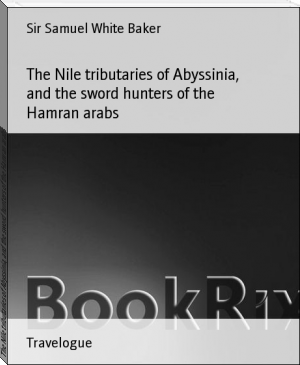

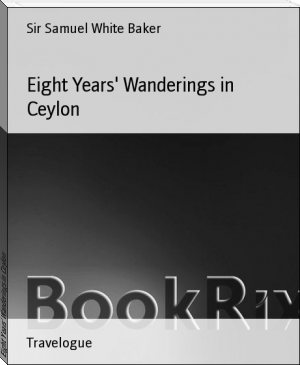
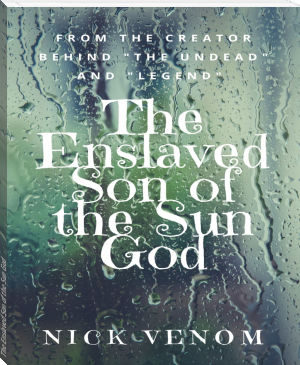
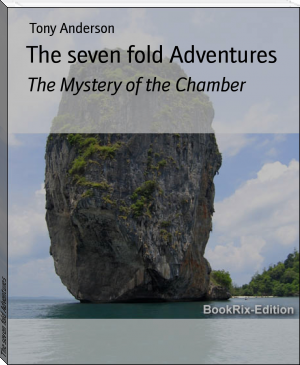
Comments (0)